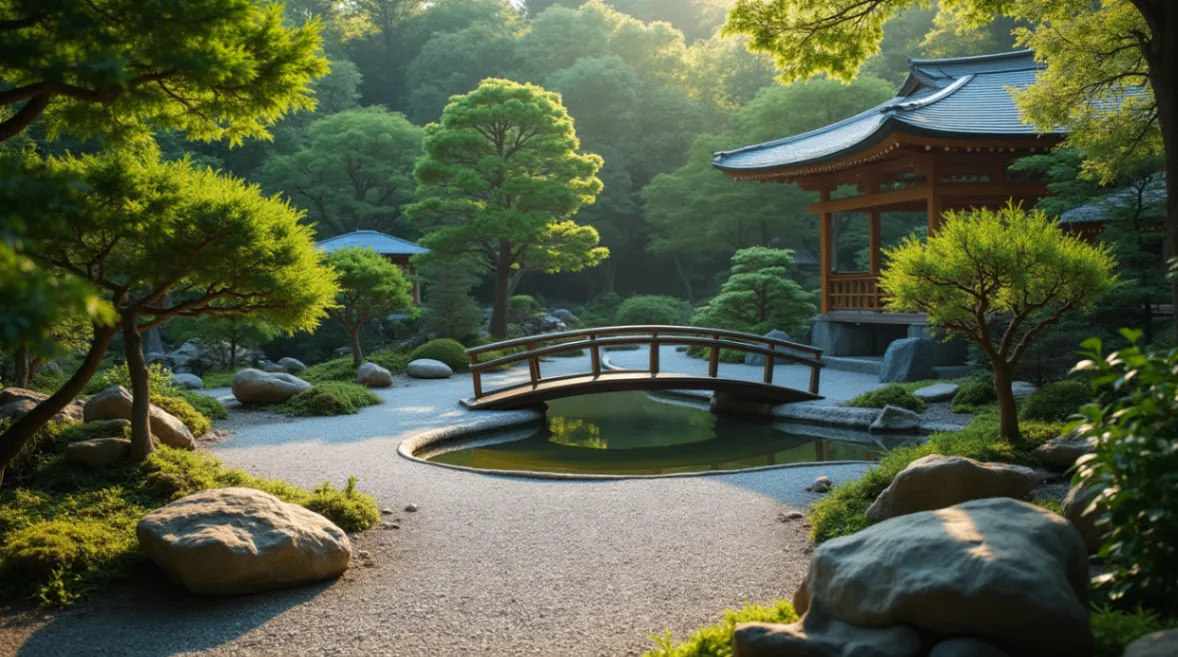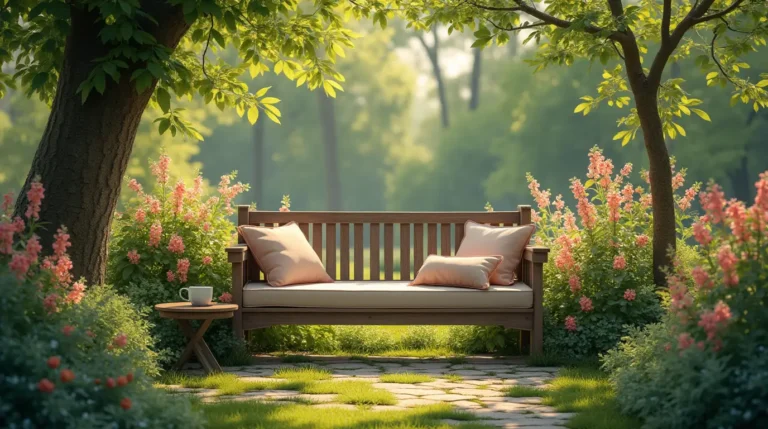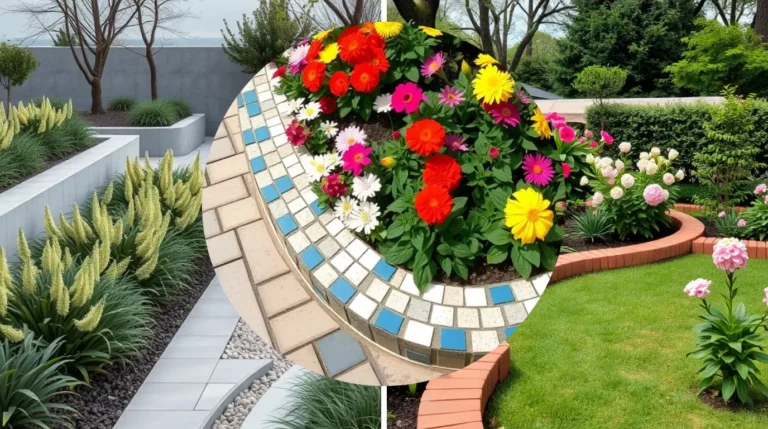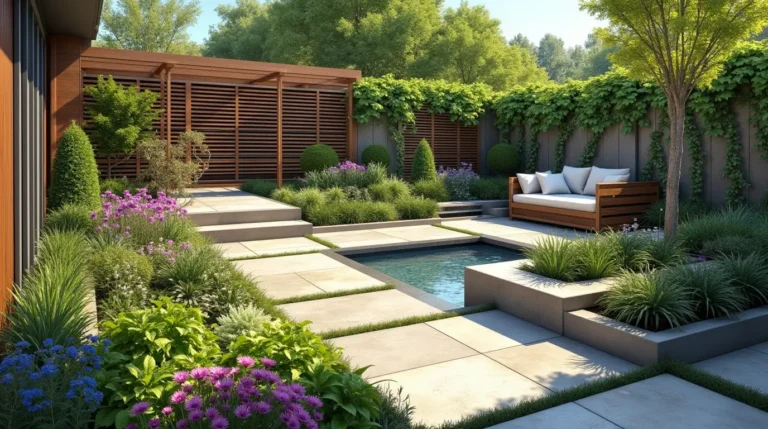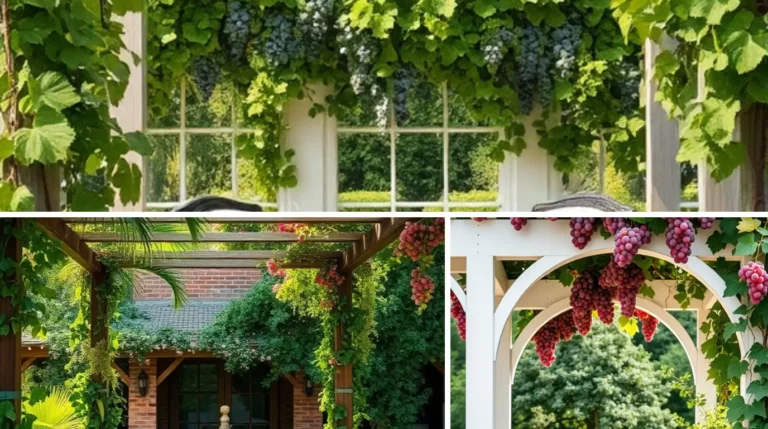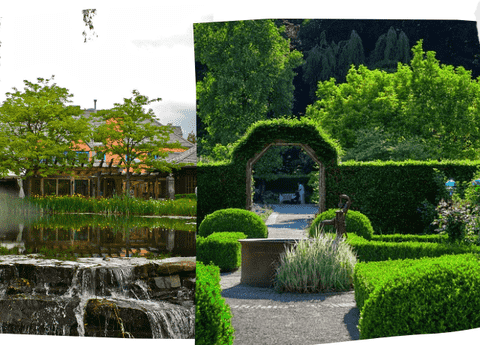Zen Japanese Small Garden: 14 Beautiful Layout Ideas for Beginners
A zen japanese small garden brings nature and calm to your home. It’s a stunning outdoor space that shows off zen beauty. You can make a peaceful oasis with the right design.
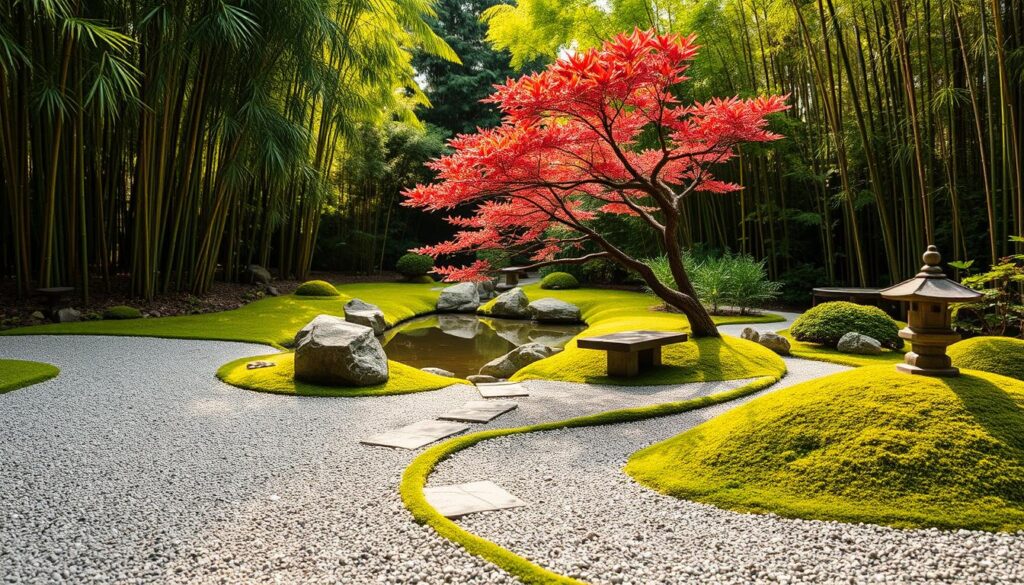
A zen japanese small garden is more than a pretty addition. It’s a quiet escape from everyday life. It combines nature and calm for a perfect spot to relax and meditate.
Introduction to Zen Japanese Small Gardens
Beginners can turn their outdoor space into a calm oasis with 14 layout ideas. A zen japanese small garden adds tranquility to your home. The right design makes a beautiful, unique outdoor area.
Key Takeaways
- Creating a zen japanese small garden brings nature and calm to your home
- A well-designed zen japanese small garden is a peaceful retreat from daily life
- Incorporating elements of nature is key to creating a stunning zen japanese small garden
- 14 beautiful layout ideas can help beginners create a serene and peaceful oasis
- A zen japanese small garden is a great way to add some tranquility to your home
- With the right design, you can create a beautiful and unique outdoor space
Understanding the Essence of Zen Japanese Small Garden Design
A japanese small garden is a peaceful place, made for relaxation and thinking deeply. To make such a calm space, you need to understand the philosophy and design rules. A Zen garden shows the beauty of nature, aiming to bring calm and connect us with the world.
Designing a japanese small garden involves several important parts. These include simplicity, not being symmetrical, and using natural things like stone, water, and plants. These elements help make a space that invites us to relax and think deeply.
The Philosophy Behind Zen Gardens
Zen gardens follow Zen Buddhism’s teachings, which stress living in the now. A japanese small garden is made to help us live in the moment. It offers a peaceful place for mindfulness and self-reflection.
Key Design Principles
To make a real japanese small garden, remember these design rules:
- Simplicity: Keep it clean and simple, without too much decoration
- Asymmetry: Use irregular shapes and patterns for natural balance
- Natural elements: Add stone, water, and plants to bring nature inside
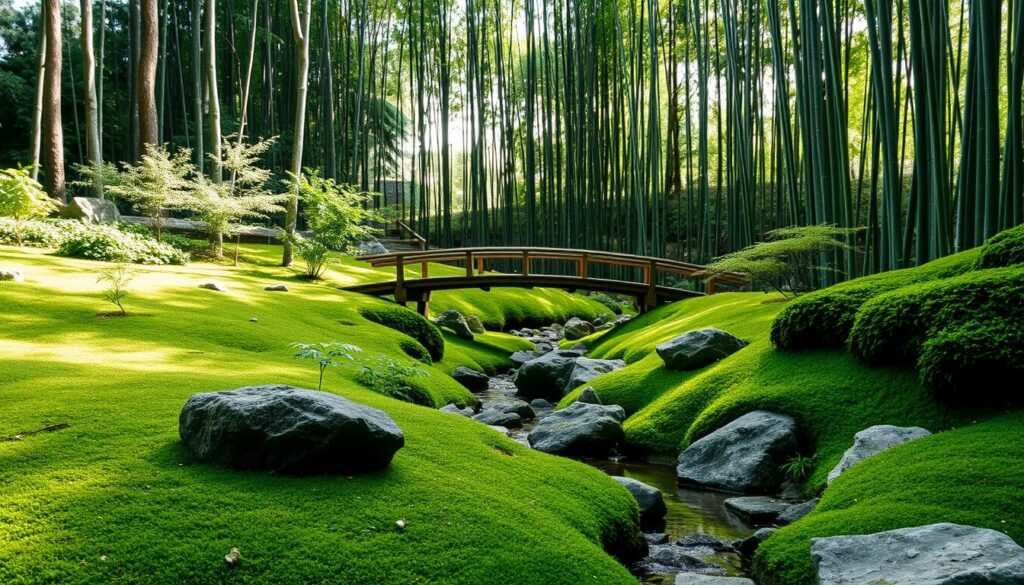
Historical Significance
Japanese small gardens have a long history, starting in the 14th century. These peaceful areas were made for meditation and thinking. Their beauty and calm still inspire gardeners everywhere today.
Essential Elements of Traditional Japanese Gardens
A traditional Japanese garden aims to bring harmony and balance. It uses several key elements to achieve this. These elements help create a peaceful and contemplative space.
Stone lanterns, water features, and carefully pruned plants are key. They are chosen and placed to balance and connect us with nature.
Designing a Japanese garden means using natural materials and plants. This creates a balanced and harmonious space.
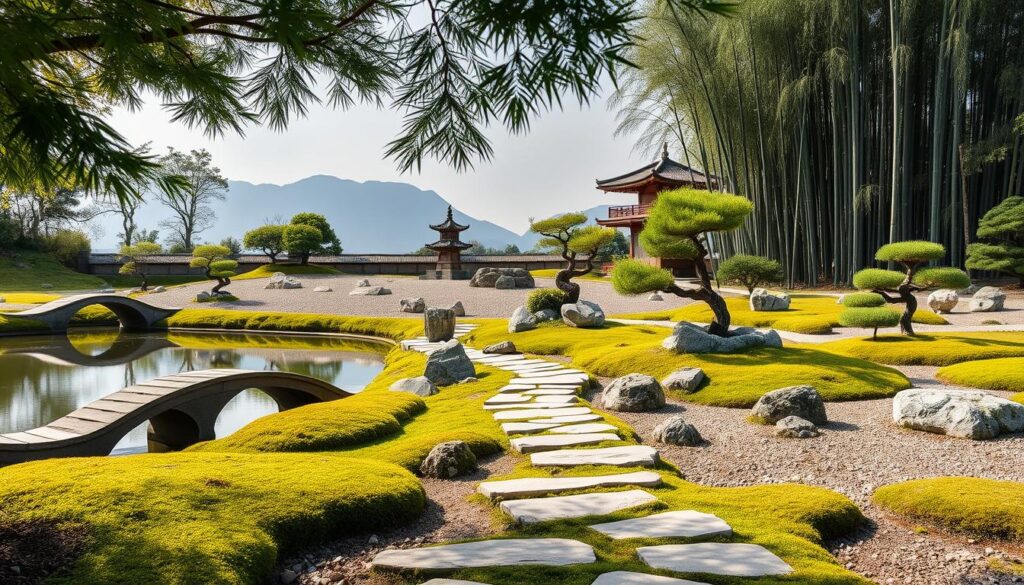
- Tea houses or small buildings
- Bridges or stepping stones
- Ornamental trees or shrubs
- Moss or other ground covers
These add depth and complexity. They also offer more chances for relaxation and thought.
By adding these elements, you can make a beautiful Japanese garden. It can be small or large, but it will be peaceful and unique.
Planning Your Space: Initial Considerations
When designing a zen japanese small garden, start by assessing your available space. Measure your garden area and think about the sunlight and shade it gets. Knowing these details helps you design a garden that fits your space and climate perfectly.
Light conditions are key when planning your garden. Most plants need sunlight to grow. So, figure out how much sunlight your garden gets. Also, think about the shade patterns during the day, as they affect the plants you can use.
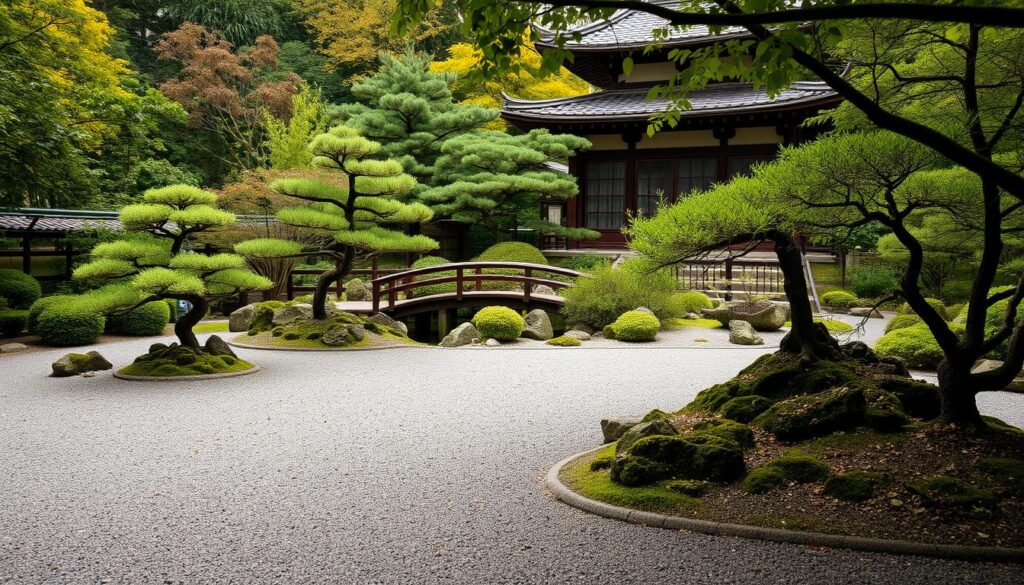
Assessing Climate Compatibility
Another important factor is climate compatibility. Different plants and materials handle temperature, humidity, and rain differently. Make sure the plants and materials you choose fit your climate. This way, your garden stays beautiful and healthy all year.
Creating a Balanced Design
To design a balanced zen japanese small garden, consider these elements:
- Plant selection: Pick plants that match your climate and light.
- Material selection: Choose materials that last in your local climate.
- Water features: Add small ponds or fountains for a calming effect.
By thinking about these factors, you can make a beautiful and peaceful zen japanese small garden. It will bring serenity to your outdoor space.
The Art of Japanese Garden Layout
A well-designed japanese small garden can be a serene oasis in the midst of a bustling city. To create such a space, it’s essential to consider the art of japanese garden layout. This involves carefully balancing natural elements, such as stone, water, and plants, to promote relaxation and contemplation.
Some key considerations for designing a japanese small garden include:
- Choosing the right plants, such as bonsai trees or flowering shrubs, to add visual interest and depth
- Incorporating traditional japanese garden features, such as stone lanterns or water features, to create a unique and beautiful space
- Using natural materials, such as wood or stone, to create paths and walking areas
By carefully considering these elements, you can create a japanese small garden that is both peaceful and visually stunning.
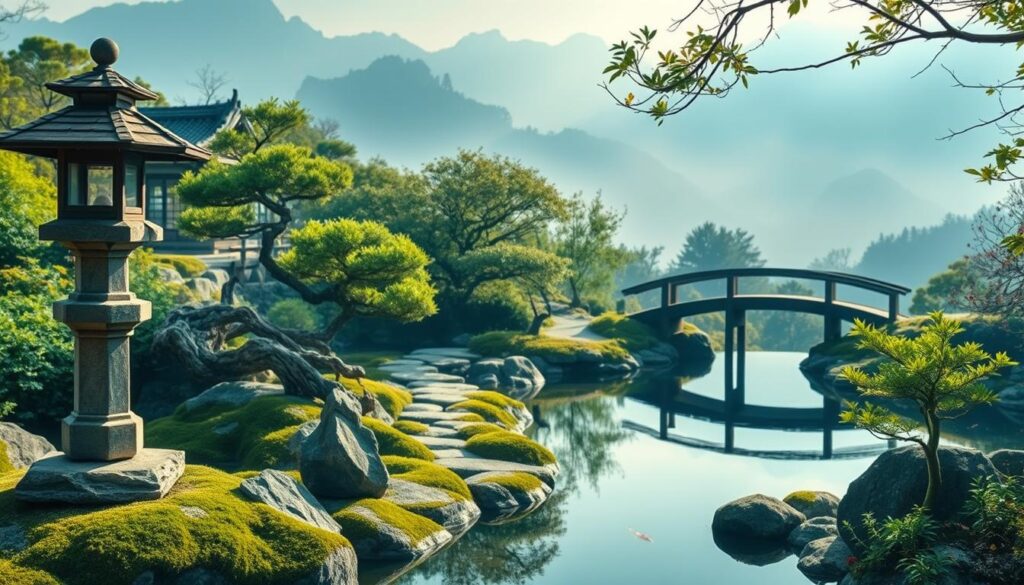
Selecting the Perfect Plants for Your Japanese Garden
Choosing the right plants is key to a beautiful Japanese garden. A mix of evergreen, flowering, and ground cover plants makes it unique. This combination creates a stunning landscape.
Plants are essential in a Japanese garden for peace and calm. Think about the climate, soil, and space when picking plants.
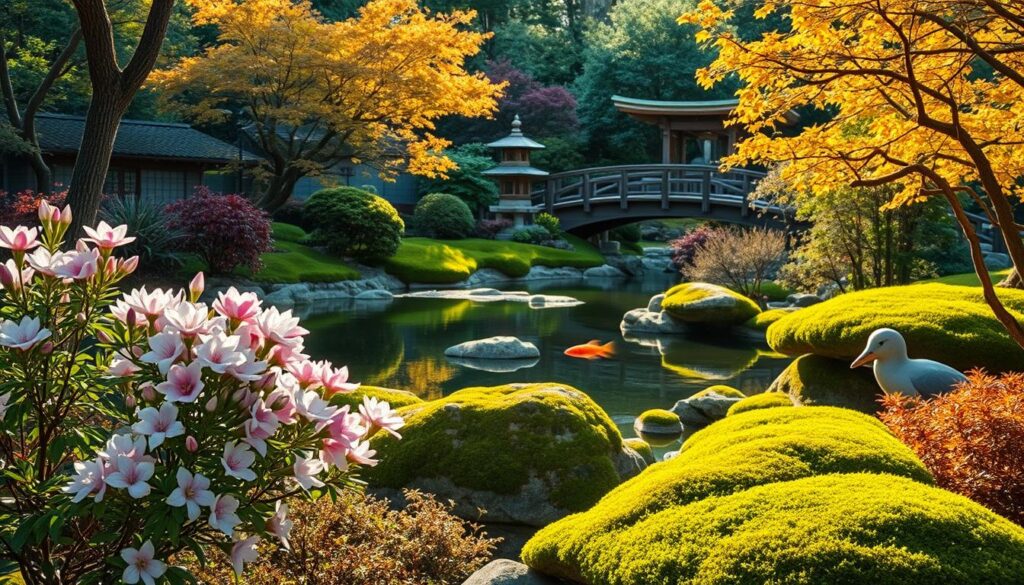
Evergreen Choices
Evergreen plants like bamboo and ferns add interest all year. They help create depth and harmony in your garden.
Flowering Plants
Flowering plants, like cherry blossoms and azaleas, bring color and life. They make your garden vibrant with blooms in every season.
Moss and Ground Covers
Moss and ground covers, such as thyme and creeping juniper, make the ground lush. They fill gaps between stones and bring serenity.
Rock and Stone Placement Techniques
In a zen japanese small garden, placing rocks and stones is key. It helps create a balanced and peaceful design. Use a mix of big and small stones to add depth and interest. Big stones can be focal points, while small ones make paths or borders.
Think about the flow and energy of your garden when placing rocks. You want it to feel like a smooth flow, not cluttered. Mixing smooth and textured stones can make your design more interesting.
Here are some tips for rock and stone placement in your zen japanese small garden:
- Use large stones to create a focal point or anchor your design
- Choose smaller stones to create a meandering path or border
- Mix smooth and textured stones to add variety and interest
- Consider the color and texture of the stones and how they will complement your plants and other design elements
By carefully placing rocks and stones, you can make a beautiful and calming garden. Balance your design with both big and small stones. Don’t be afraid to try different arrangements until you find the perfect one.
Water Features in Small Japanese Gardens
A japanese small garden is not complete without a water feature. Water features are a key element of Zen Japanese small garden design. They add visual interest and depth to your space. They also create a soothing and peaceful atmosphere, perfect for relaxation and meditation.
Some popular water features for a japanese small garden include:
- Mini waterfalls: These can be used to create a soothing and peaceful sound, and can be designed to fit into even the smallest of spaces.
- Reflecting pools: These can be used to create a sense of calm and tranquility, and can be surrounded by plants and other decorative elements.
- Dry stream beds: These can be used to create a sense of movement and energy, and can be designed to mimic the look of a real stream bed.
When choosing a water feature for your japanese small garden, consider the size and style of your garden. Also, think about your personal preferences and needs. With a little creativity and planning, you can create a beautiful and peaceful water feature. This will enhance the overall beauty and tranquility of your japanese small garden.
Creating Paths and Walking Areas
Designing a japanese garden means thinking about paths and walking areas. Meandering paths encourage exploration and thought. Using stone or wood makes the space calm and welcoming.
In a japanese garden, paths are more than just ways to get around. They add to the garden’s beauty. By designing them well, you make the garden feel cozy and peaceful. Plants and trees help separate areas, making the garden lively.
When making paths and walking areas, keep these tips in mind:
- Choose natural materials that match the garden.
- Make paths that invite you to wander.
- Add plants and trees for a cozy feel.
- Make sure paths are wide enough for easy walking.
By following these ideas, you can make a beautiful and peaceful japanese garden. The goal is to create harmony and balance. This way, visitors can feel connected to nature. With careful planning, your garden will be unique and special.
Japanese Garden Structures and Ornaments
A zen japanese small garden is more than plants and water. It’s also about the structures and ornaments that make it interesting. Lanterns, fences, and bridges play a big role in making your garden beautiful and useful.
Lanterns and Lighting
Lanterns and lighting can make your garden feel warm and welcoming. You can pick from many styles and materials like stone, metal, or wood. This way, you can find the perfect match for your garden.
Bamboo Fences
Bamboo fences help create a cozy feel in your garden. They’re also good for the environment, making them a smart choice for a zen garden.
Bridges and Gates
Bridges and gates add drama and grandeur to your garden. You can choose from many styles and materials. Adding a water feature or other element can make your garden feel lively and full of energy.
Incorporating Meditative Spaces
Creating a japanese small garden is more than just a beautiful outdoor space. It’s about making a place that encourages mindfulness and peace. Meditative spaces are key to achieving this.
A quiet seating area or a contemplation garden can be a meditative space. Here, you can sit and reflect in nature’s calm. Use natural materials like stone or wood to add to the tranquility.
Here are some ideas for meditative spaces in your garden:
- A seating area surrounded by lush greenery and vibrant flowers
- A contemplation garden with a serene water feature, like a small fountain or reflecting pool
- A peaceful walkway lined with moss and ground covers, leading to a secluded seating area
Adding meditative spaces to your garden makes it a haven for both beauty and mental well-being. It’s perfect for escaping daily life or finding a peaceful retreat. A well-designed japanese small garden is the ideal sanctuary.
Seasonal Considerations for Your Japanese Garden
A well-designed japanese garden needs careful thought about the changing seasons. As seasons change, your garden will go through changes. These changes can make your garden more beautiful or less so. It’s key to know how seasons will affect your outdoor space.
In a japanese garden, seasons are very important for its look. Spring brings vibrant flowers, while winter offers calm snowscapes. By welcoming each season, you can make your garden stunning and useful.
- Pruning and fertilizing plants in the spring to promote new growth
- Regular watering and weeding in the summer to maintain a lush and vibrant appearance
- Protecting plants from harsh weather conditions and pruning back dead growth in the fall and winter
By considering these seasonal tips, your japanese garden will flourish all year. It will be a peaceful and beautiful place in every season.
Tools and Materials Needed
To make a stunning zen japanese small garden, you need the right tools and materials. You’ll want natural stuff like stone, wood, and plants. These will help make your garden look unique and peaceful. You’ll also need a shovel, rake, and pruning shears to keep it looking good.
A great zen japanese small garden has a mix of things. This includes plants, water features, and decorative stones. Here are some important materials you’ll need:
- Stone and gravel for paths and decorations
- Wood for fences, bridges, and more
- Plants, like trees, shrubs, and groundcovers
- Stuff for water features, like pumps and pipes
- Decorative items, like lanterns and statues
When picking materials, think about the look you want. Go for natural and sustainable options. They should fit well with the garden’s other parts. With the right tools and materials, you can make a serene zen japanese small garden. It will be a calm spot away from daily worries.
Common Mistakes to Avoid
Creating a japanese small garden can be tricky. Knowing common mistakes helps avoid them. This way, you can make a beautiful and useful garden that brings peace to your outdoor space.
A good japanese small garden is a place for calm and thought. To make it, avoid these common mistakes:
Design Errors
One big mistake is placing plants and structures badly. This makes the garden look messy and unbalanced. It loses its beauty and harmony.
Plant Selection Mistakes
Choosing the wrong plants for your climate or soil is another error. This makes plants struggle, making your garden look sickly and unwelcoming.
Maintenance Oversights
Not watering and pruning plants regularly is a big mistake. Keeping up with maintenance is key. It keeps your garden looking great and your plants healthy.
Knowing these mistakes helps you make a beautiful and useful japanese small garden. It becomes a peaceful escape from daily life.
Budget-Friendly Japanese Garden Ideas
Creating a beautiful japanese garden doesn’t have to cost a lot. With a bit of creativity, you can make a stunning garden without spending too much. Use recycled materials like reclaimed wood and stone for benches, paths, and water features.
Native plants are a smart choice for your garden. They’re cheaper than exotic plants and need less care. Moss, ferns, and bamboo are great options for a japanese garden.
Doing DIY projects can also save money. Build your own lanterns or birdhouses to decorate your garden. Old pots and containers can be repurposed for a unique look.
Being creative and resourceful lets you enjoy a beautiful japanese garden without spending a lot. With some planning and imagination, you can have a peaceful garden in your backyard.
Maintaining Your Zen Japanese Garden
To keep yourzen Japanese small garden
looking great, you need to care for it every day. Start by watering plants, pruning, and picking up any trash. Also, do bigger tasks like fertilizing, weeding, and checking for pests or diseases once a month.
Make a plan for each season to get yourJapanese garden
ready for the weather. In winter, protect plants from cold. In spring, refresh the garden. And in summer, keep the plants from getting too big. By taking care of yourJapanese small garden
, it will stay peaceful and beautiful for many years.
FAQ
What is a Zen Japanese small garden?
A Zen Japanese small garden focuses on simplicity and balance. It aims to connect us with nature. These gardens help us relax and find harmony.
What are the key design principles of a Zen Japanese small garden?
The design of a Zen Japanese garden is simple and asymmetrical. It uses natural elements like stone, water, and plants. These elements create a peaceful and balanced space.
What are the essential elements of a traditional Japanese garden?
Traditional Japanese gardens have stone lanterns, water features, and carefully pruned plants. These elements work together to create a peaceful space for relaxation and contemplation.
How do I plan my Zen Japanese small garden?
When planning your garden, consider the space, light, and climate. Measure your area and check the sunlight and shade. Also, ensure the plants and materials fit your climate.
How do I select the right plants for my Japanese garden?
Choose a mix of evergreen, flowering plants, and moss or ground covers. Evergreen plants offer year-round interest. Flowering plants add color, and moss creates a lush ground cover.
How do I incorporate water features into my Japanese garden?
Water features are key in Zen Japanese gardens. They add depth and interest. Consider a mini waterfall, reflecting pool, or dry stream bed for a unique design.
How do I create paths and walking areas in my Japanese garden?
Paths and walking areas are crucial in Zen Japanese gardens. Use natural materials like stone or wood for a meandering path. This invites exploration and contemplation.
What kind of Japanese garden structures and ornaments can I incorporate?
Japanese structures and ornaments, like lanterns and bridges, add interest. They create drama and grandeur in your garden.
How do I incorporate meditative spaces into my Japanese garden?
Meditative spaces are key in Zen Japanese gardens. Create a quiet area for sitting and reflection. This helps in finding peace and calm.
What are some common mistakes to avoid when creating a Zen Japanese small garden?
Avoid design errors, like poor plant placement. Also, don’t make plant selection mistakes or neglect maintenance. Regular watering and pruning are essential.

